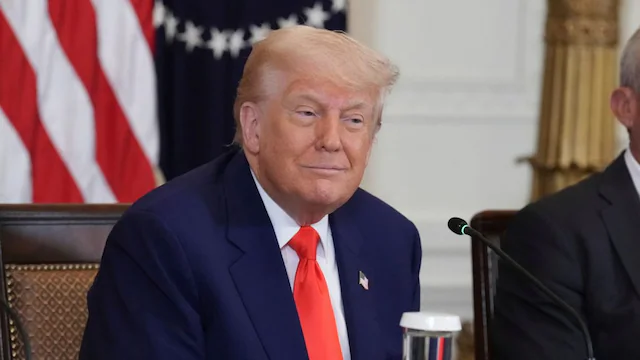- Courses
- GS Full Course 1 Year
- GS Full Course 2 Year
- GS Full Course 3 Year
- GS Full Course Till Selection
- Online Program
- GS Recorded Course
- NCERT (Recorded 500+ Hours)
- Polity Recorded Course
- Geography Recorded Course
- Economy Recorded Course
- AMAC Recorded Course
- Modern India, Post Independence & World History
- Environment Recoded Course
- Governance Recoded Course
- Science & Tech. Recoded Course
- International Relations and Internal Security Recorded Course
- Disaster Management Module Course
- Ethics Recoded Course
- Essay Recoded Course
- Current Affairs Recoded Course
- CSAT
- 5 LAYERED ARJUNA Mentorship
- Public Administration Optional
- ABOUT US
- OUR TOPPERS
- TEST SERIES
- FREE STUDY MATERIAL
- VIDEOS
- CONTACT US
SENIOR CARE REFORMS IN INDIA: NITI AAYOG
SENIOR CARE REFORMS IN INDIA: NITI AAYOG
10-04-2024
Recently, NITI Aayog released a position paper titled “Senior Care Reforms in India: Reimagining the Senior Care Paradigm”.
- The report was released by NITI Aayog Vice Chairman Suman Bery in the presence of Member (Health) Dr. Vinod K. Paul, CEO B. V. R. Subrahmanyam, and Department of Social Justice and Empowerment (DoSJE) Secretary Saurabh Garg.
- Ms. L. S. Changsan, AS&MD, MoHFW, Shri Rajib Sen, Senior Adviser, NITI Aayog, Ms. Monali P. Dhakate, Joint Secretary, DoSJE and Ms. Kavita Garg, Joint Secretary, M/o Ayush, were also present at the launch.
Key Highlights
- According to the World Health Organization’s (WHO) World Report on Ageing and Health (2015), the percentage of people worldwide who are 60 or older is expected to nearly double between 2015 and 2050, from 12% to 22%, with significant ramifications for socioeconomic structures and healthcare systems.
- As the population ages at an increasing rate, countries worldwide recognize the need to change their perspective on ageing and shift their focus to the needs of older adults.
- In India, senior citizens, i.e. people aged 60 years and above, currently comprise a little over 10% of the population, translating to about 104 million.
- The United Nations Population Fund (UNFPA) projects that this population, which will make up 158 million people by 2025, is the one that is ageing at the fastest rate.
- By 2050, the elderly population is projected to rise to 319 million (19.5% of the total population).
- Further, the total dependency ratio, which stood at 56.92 in 2020, is projected to decrease steadily till the 2025 due to the rise in the percentage of the working-age population; but it is expected to rise again to touch 61.22 by 2050.

Population by broad age groups in percentage, India, 1950–2050
- These statistics and trends are largely a result of declining fertility rates and increasing life expectancy rates. The total fertility rate stood at 5.9 in 1950 and declined to 3.4 in 2000. Currently, the fertility rate is 2 as per latest SRS data. Additionally, the life expectancy at birth rose from 35.8 in 1950 to 62.5 in 2000 and is further projected to rise to 75 by 2050.
Key Findings from the Longitudinal Ageing Study of India (LASI)
- The Longitudinal Ageing Study of India (LASI) launched in 2016 by the Ministry of Health and Family Welfare is a full-scale national survey and a seminal study on the status of the ageing population in India.
- The report has provided several valuable insights into the process and impact of ageing in India. The key highlights of the report are given below.
Physical Health
- Every fourth Indian over 60 years and every fifth Indian over 45 years reported having poor health
- 75% of the elderly have one or more chronic diseases
- 40% of the elderly have one or other disabilities
- 1 in 4 has some kind of multi-morbidity
- Diabetes is more common among senior citizens in urban India
- Cancer prevalence is on the rise and is higher in urban India.
Mental Health
- Around 20% of the elderly in India have mental health issues
- The prevalence of probable depression among the elderly is ten times higher than the self-reported prevalence of diagnosed depression, implying a greater burden of undiagnosed depression
- Almost a third of the elderly population exhibits depressive symptoms
Functional Abilities
- 11% have some form of impairment
- 24% of seniors have limitations in activities of daily living
- 58% have difficulty stooping, climbing, or kneeling
- 43% use an aid or supportive device.
Access to Healthcare Facilities
- 7% experience hospitalization
- 60% received OPD care (one year before the LASI survey)
Demography-specific
- 12% of the total population consists of elderly people and is projected to reach 319 million by 2050, growing at a rate of around 3% per year
- The overall sex ratio in the elderly population is 1065
- 58% of the total number elderly are women, out of which 54% are widows
- The overall dependency ratio is 62 per 100 working-age population
Living Pattern–related
- Approximately 28% of the elderly are living with children without a spouse
- Overall, 6% live alone, and 09% of women elderly live alone
- 7 out of 10 elderly persons reside in rural areas
Diet
- Food insecurity is increasing among India’s elderly
- Almost 6% of people in India over 45 years ate smaller portions or skipped meals, and 5.3% did not eat, even when they were hungry
Knowledge and Awareness
- Low awareness levels among the elderly regarding welfare provisions available for them. For instance:
- 12% are aware of the Maintenance and Welfare of Parents and Senior Citizens Act 2007
- 28% aware of any kind of senior concession
- 50%, 44%, and 12% are aware of IGNOAPS, IGNWPS, and Annapurna Scheme, respectively
- 24% experienced problems in providing documents
Living Conditions and Quality of Life
- 32% of the elderly have low life expectations
- At least 5% of India’s elderly population reported having experienced abuse which can be physical, sexual, psychological, or financial
- Mistreatment is more common among elderly women and those living in rural areas
Work
- Male senior citizens worked at a rate of approximately 50%, while female senior citizens worked at a rate of 22%
- When compared to their urban counterparts, a greater proportion of senior citizens in India’s villages work
Pension
- 78% of the elderly population without a pension
Access to Healthcare Finance
- Only 18% of seniors are covered by Health insurance
- Mean Out of Pocket Expenditure in private health facilities is Rs. 31,933 (last in-patient visit)
- Health-related expense is the most common cause of indebtedness (26%) in urban India
Cost of Ageing
- MPCE (monthly per capita consumption expenditure) of a household with at least one elderly is Rs. 2,948 compared to households without an elderly member (Rs. 3,001)
- MPCI (monthly per capita income) of a household with at least one elderly person is lower than households without an elderly member (Rs. 3,568 vs. Rs. 4,098).
|
Initiatives Taken by Indian Government
- Rashtriya Vayoshree Yojana
- It is a central sector scheme funded from the Senior Citizens’ Welfare Fund. The fund was notified in the year 2016. All unclaimed amounts from small savings accounts, Employee Provident Fund (EPF) and Public Provident Fund (PPF) are transferred to this fund.
- It aims to provide aids and assistive living devices to senior citizens belonging to Below Poverty Line (BPL) category who suffer from age-related disabilities such as low vision, hearing impairment, loss of teeth and locomotor disabilities.
- SAMPANN Project: It was launched in 2018. It is a seamless online pension processing and payment system for Department of Telecommunications pensioners. It provides direct credit of pension into the bank accounts of pensioners.
- SAGE (Seniorcare Ageing Growth Engine) Initiative: It is a “one-stop access” of elderly care products and services by credible start-ups. It has been launched with a view to help such persons who are interested in entrepreneurship in the field of providing services for elderly care.
- Pradhan Mantri Vaya Vandana Yojana (PMVVY): The scheme enables old age income security for senior citizens through provision of assured pension/return linked to the subscription amount based on government guarantee to Life Insurance Corporation of India (LIC). The scheme provides an assured return of 8% per annum for 10 years.
- Integrated Program for Older Persons (IPOP): The main goal of this policy is to improve the quality of life of senior citizens. This is done by providing them with various basic amenities such as food, shelter, medical care, and even entertainment opportunities.
Other schemes include –
- National Helpline for Senior Citizens i.e., Elder Line with toll-free number 14567
- Senior Citizens’ Welfare Fund
- Vayoshreshtha Samman
- Accessible India Campaign (Sugamya Bharat Abhiyaan)
- E-Anudaan Portal
Key Issues and Challenges
Conclusion
- Ageing is linked to physiological changes and illnesses and has socio-economic and political consequences. Moreover, the experience of ageing is diverse at an individual level due to different socio-economic backgrounds, gender, place of residence, education level, family, and social support.
- The report is a call for action on what needs to be done to bring a greater focus on senior care.
- DoSJE is on ageing with dignity, ageing at home, and productive ageing, which will encompass social, economic, and health aspects.
- The recommendations in this position paper categorize the specific interventions needed in terms of empowerment, service delivery, and their inclusions under four core areas: Health, Social, Economic/ Financial, and Digital.
- It strives to push the frontiers of senior care by recognizing the evolving medical and non-medical needs of seniors, thus envisioning a multi-pronged strategy for designing an effective and synergized senior care policy.
Must Check: Best IAS Coaching In Delhi



